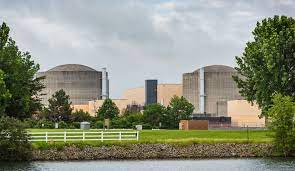
Big banks and climate change
Dear EarthTalk: How is it that banks play a disproportionately large role in the increase in greenhouse gas emissions, and what can we do to reform this?
—Philip, C., New York, NY
Aug. 19. Banks play a critical role in the global economy. By financing industrial activities and investing in infrastructure projects, banks are at the forefront of driving economic growth. However, through their investments in fossil fuel industries, banks such as Chase, Wells Fargo and Bank of America are also responsible for financing the emission of greenhouse gasses.
The carbon emissions produced by banks can be traced to high carbon portfolios consisting of fossil fuel industries. According to Whistleblowers.org, the world’s 60 largest commercial banks have provided more than 3.8 trillion dollars for fossil fuels through lending and underwritings. By supporting and investing in companies that extract and produce oil, gas and coal, banks are helping such companies expand, regardless of the global shift towards a greener economy.
Rewriting the narrative
What can banks do to rewrite this narrative? For one, shifting their portfolios away from carbon intensive industries and toward sustainable projects is needed. In doing so, banks can invest in industries that reduce carbon emissions. Additionally, green bonds, fixed income financial instruments used to fund climate positive projects, and climate funds, financial mechanisms that support low carbon projects and initiatives, can be utilized by providing capital directed specifically for eco-friendly projects.
Furthermore, banks can reduce their greenhouse gas emissions by adopting ESG (environmental, social and governance) criteria, a screening technique that judges companies based on their relationship with their social and ecological environment. By applying these criteria to potential investments, they can shift toward working with companies that reflect environmentally friendly values. Adopting ESG criteria can help banks reduce their carbon footprints and addresses other wider social issues.
Transparency
One easy step for banks to take is to enhance their transparency and accountability. By disclosing the carbon footprint of their investment portfolios as well as their targets for reducing emissions, banks can demonstrate their dedication to a carbon neutral future. Frameworks like the Task Force on Climate Related Financial Disclosures can be used to provide guidelines for reporting and stakeholder assessments, and also to compare the emissions of different banks. Greater transparency enables the tracking of banks’ progress towards reduced greenhouse emissions.
Readers can study their banks’ carbon footprints to identify “greenwashing,” a technique used to deceptively portray a company as green friendly. Search their websites for impact reports to understand their ethics and investments. Look for external ecological certifications and use resources like Bank Green, which conduct environmental analyses of banks. By supporting greener banks, you can contribute to transparency and accountability. Through such actions you can influence the financial sector’s shift towards a low carbon future.
CONTACTS: Ran.org, www.ran.org/campaign/stop-banks-funding-climate-chaos/; The Role of the Banking Industry in Facilitating Climate Change Mitigation and the Transition to a Low-Carbon Global Economy, https://papers.ssrn.com/sol3/papers.cfm?abstract_id=1762562; Bank.Green, https://bank.green.
EarthTalk® is produced by Roddy Scheer & Doug Moss for the 501(c)3 nonprofit EarthTalk. See more at https://emagazine.com. To donate, visit https://earthtalk.org. Send questions to: question@earthtalk.org.





